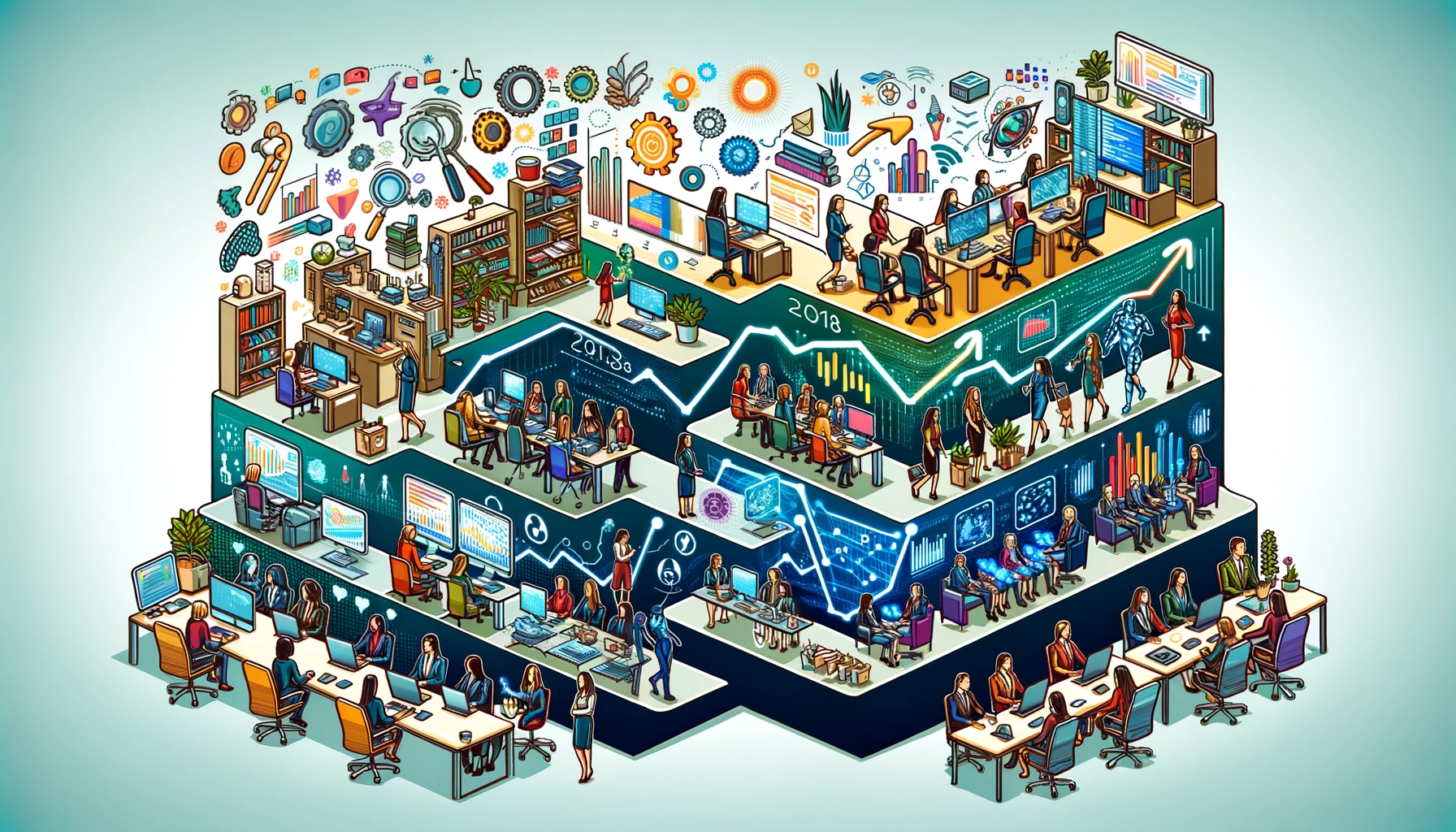According to the World Health Organization, about one billion people across the world have some sort of disability
today. Some disabilities can affect the life of someone daily, other disabilities can affect the life of someone
periodically. Regardless of ability (or disability), all are equal users of technology, but those who are disabled
may require additional assistance when using the technology. Below we provide some tips of how to consider the
accessibility of disabled users, and how these tips can improve the overall quality of your next mobile or desktop
app.
Understanding Disabilities
Before we look at how technology can have a massively positive effect on those who are disabled, we must first
understand the different types of disabilities, and adjust our lens of seeing disabilities in their current social
stigmas. First, not all disabilities are the same. As a matter of fact, there are typically three categories of
disabilities and they differ by the way they affect someone.
- Some disabilities, and perhaps the most stigmatized are disabilities that are permanent. Some of these
disabilities are chronic, some are incurable. Examples of these disabilities include Alzheimer’s, deafness or
blindness, paralysis, dyslexia, and more. - Other disabilities may be temporary. These are often physically associated disabilities, such as
post-surgery ailments, broken limbs, continued lack of sleep, swelling, numbness, etc. - There are also situational disabilities, like wearing reading glasses, texting-while-driving, and
work-related stress. These types of disabilities probably haven’t crossed your mind as an actual “disability,”
and that’s due to their commonality in our society. But there’s a good chance you may have suffered from a
situational disability at some point in your life. - “Across the world, people with disabilities have poorer health outcomes, lower
education achievements, less economic participation, and higher rates of poverty than people without
disabilities. This is partly because people with disabilities experience barriers in accessing services that
many of us have long taken for granted, including health, education, employment, and transport as well as
information.” – World Health Organization
Because of the abundance of those disabled in the U.S., the United States Access Board proposed a law for tech
accessibility. As of December of 2000 it is a required law for technology companies in the U.S. to ensure that their
products are as inclusive and accessible as possible for all types of users (Section 508 Standards for Electronic
and Information Technology). This includes: software applications and operating systems, Web-based intranet and
internet information and applications, telecommunications products, video and multimedia products, mobile products,
desktop computers, and portable computers.
Unfortunately, the many grey areas of the law means it’s hard to enforce. Also, today’s rapid innovation of
technology, and time and budget constraints have led some tech companies to overlook the law completely.
It’s up to all companies, from startups to the Fortune 100s, to hold themselves accountable when developing apps, and
consider the realities of the one-in-seven users who are disabled.
The Importance of an App’s Accessibility
In terms of software development, market research and hands-on feedback can provide great insight on using an app
from the perspective of a person with a disability. For smaller companies who may not have the resources to do this
research before a product launch, they can provide internal “accessibility training” for its designers, developers,
project managers, quality assurance engineers, and others.
Mike Shebanek, senior director of Yahoo’s accessibility team, spoke in an interview with The Week Magazine that many
computer science and software engineering graduates are coming out of college with absolutely no experience or
education in user accessibility. This is troubling, because if our future app designers and developers don’t
understand the importance of accessibility, how are they going to create the best possible product for their users?
Additionally, the importance of an app’s accessibility is magnified when we’re discussing the experience of disabled
users.
Tech companies that are ahead of the curve are developing their own “user experience” labs to give their employees a
personal touch of what it’s like to be disabled. In the case of Yahoo, they now require new employees to complete
accessibility workshops in hopes of giving them a better understanding of the user experience when working on a new
project.
These workshops at Yahoo simulate the effects of permanent and temporary disabilities for employees. For example,
weighted and restrictive gloves may be worn by an employee using an app to simulate the effects of a user with
arthritis or lack of hand mobility. Infrared goggles will give an employee the experience of a colorblind user when
scrolling through an app or viewing an advertisement. Foam earplugs or sound deadening headphones can simulate
hearing impairments or deafness.
Even Fortune 100s like Apple have made it a priority to make every aspect of their technology as accessible as
possible. For its watches, Apple has developed an algorithm for wheelchair users that are able to count “pushes”
instead of steps. Apple’s Switch Control allows users who physically cannot use a keyboard to access everything with
a joystick. Apple TV has color filters and contrast control, zoom, and audio descriptions of shows to heighten the
user experience and accessibility. VoiceOver, a feature for Mac, is a screen reader that will describe everything on
the user’s screen, and is available in more than 30 languages. VoiceOver is accessible using hand gestures, your
keyboard, or even Apple’s braille display.
Tips for Making Your Next Project More Accessible
There’s a responsibility on everyone working on a project to make sure the user experience isn’t compromised. As
mentioned before, this includes the designers, developers, quality assurance engineers, and even content strategists
and copywriters. Below are a few ways each department can work towards fulfilling their responsibility:
Designers
Some of the most user-friendly websites and apps use a similar formula: keep it simple. For example, users with
cognitive disabilities often rely on bold visual cues to help them navigate a website or app. In the case of a
blog-posting website, show the user where the header text and body text should go, and what options they have to
place an image or hyperlink. Clearly map out your interface, especially for disabled users. Use clear labels and
prompts, show them where to click, where to type, where to scroll, etc. Just because an app’s design is simple and
easy-to-use, doesn’t mean the overall product can’t be elaborate.
Does your product adhere to WCAG (Web Content Accessibility
Guidelines)? Can it be navigated without using a keyboard? This is one of the major tests WCAG considers in
terms of user accessibility. How about your app’s contrast ratio? Have you tested it with any tools? These are just
a few of the many tools that help designers test the accessibility of their apps.
Developers
For developers, don’t be afraid to collaborate with your designers to figure out the most logical flow of content and
information for your product. Make sure your code is semantic and clean, and use native elements when possible.
Use appropriate mark-ups for headings, lists, tables, etc. According to WCAG, HTML5 provides additional elements,
such as <nav> and <aside>, to better structure your content. Also, use scripting to capture and respond to keyboard actions,
allowing the user to navigate an app solely with their keyboard.
When an error or bug occurs on the app, allow users to be as descriptive as possible with a feedback form to help you
correct your code.
Quality Assurance
As with any product, do thorough tests to ensure your product is as error-free as possible. Verify your autotests by
following up with manual tests. One way QA can implement a manual test is by attempting to navigate the website
themselves with just their keyboard. WCAG suggests this is one of the more difficult, yet important tests of a
website’s accessibility.
If a visual CAPTCHA is used in your app, are accessible alternatives such as audio CAPTCHAs provided? Are there any
color contrast issues in the final product? Is the content confusing or misleading? Is there meaningful and
descriptive alt text being used for images, and if so, is it even readable to the user? These are all factors you’ll
need to bring up with your team.
Content Writers
Similar to the designers, your job is to keep the content of the product simple and easy to understand. Unless the
product is going to be marketed towards a very specific audience, there’s no need to use industry-specific
jargon or an array of complex vocabulary. For the disabled or elderly user, especially ones with impairments or
learning disabilities, it’s best to keep the writing style of the product to about an eighth-grade level.
A content writer may also want to clearly define their sections. Use descriptive, yet direct headers for a piece of
copy. Make sure your content is structured in a way that makes sense to the user, and work closely with the designer
to see what flows best on the app. If a video or multimedia clip is part of the content being used, make sure closed
captioning is available as an option.
The next time you and your team are working on a new project, consider the accessibility of all users — especially
ones that may have a difficult time using the technology. Making sure your product is accessible does require
additional time and care, but these steps should be taken because customers that are disabled are customers
nonetheless, and their positive and negative feedback can have a direct impact on your company’s image. Remember,
accessibility doesn’t impede innovation, innovation means being able to be adaptable and accessible.





